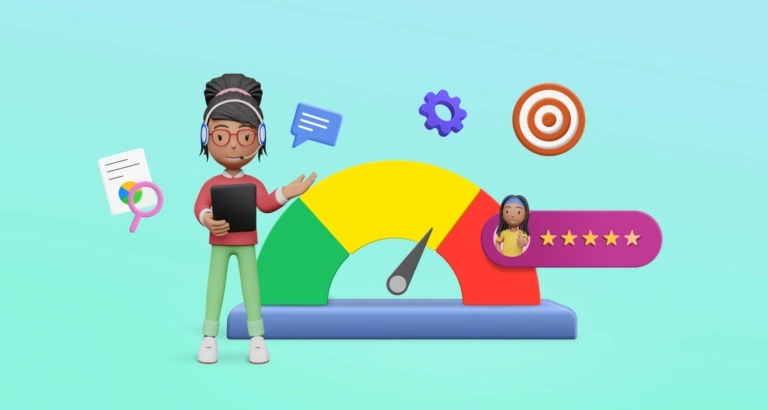Modern businesses understand that delivering a positive experience can have a profound impact on business expansion, with excellent customer service being of utmost importance.
According to Microsoft, 96% of respondents claim customer service influences their brand selection and loyalty.
Customer service can significantly influence your profit margin and public perception of your company. Therefore, monitoring customer service KPIs (key performance indicators) becomes essential.
This article provides a comprehensive overview of crucial customer service KPIs necessary for agents, managers, and leaders with regards to customer orientation in businesses.
In this blog we will explore the most important customer service KPIs in detail, their advantages, and how to implement them effectively.
What is a customer service KPI?
Customer service KPIs are metrics used to measure the quality of a company’s customer service and the experience it provides.
These indicators help businesses analyze their goals, determine their success in satisfying customer needs, and identify areas where they can improve their service.
How are customer service KPIs different from customer service metrics?
Customer service KPIs and customer service metrics both measure the performance of a customer service department, but they are used for different purposes.
Customer service metrics are broad measurements of a department’s performance.
They can include a wide range of data, such as the number of calls taken, the average time to resolve an issue, or the number of complaints received.
These metrics can be used to track performance over time, identify trends, and make comparisons with industry standards.
On the other hand, customer service KPIs are a more specific set of measurements that are directly linked to an organization’s strategic goals.
Customer service KPIs are used to assess the effectiveness of a customer support department in achieving these goals.
For example, if a company’s goal is to improve customer satisfaction, a relevant KPI might be the percentage of customers who rate their service experience as “excellent.”
In short, while customer service metrics give you a broad overview of performance, customer service KPIs tell you whether you’re meeting your specific business objectives.
What are the most important KPIs for customer service?
KPIs for customer service are crucial in determining the trajectory of a business, whether it’s on the right path or not.
Here are important customer service KPI examples.
First response time (FRT)
First response time refers to the amount of time from when a customer first makes a request or issue known, to when the company or business acknowledges or responds to that request.
It is an important KPI for customer service to measure the efficiency and effectiveness of a customer support team.
This customer service KPI reflects how effectively your agents can manage multiple tickets simultaneously and handle varying ticket volumes.
Any lag in the first response could result in a negative customer experience, making FRT one of the most closely observed customer service KPIs.
Service level agreements (SLAs) often establish expectations for FRT. An SLA might, for instance, stipulate a response to each customer support request within an hour or less.
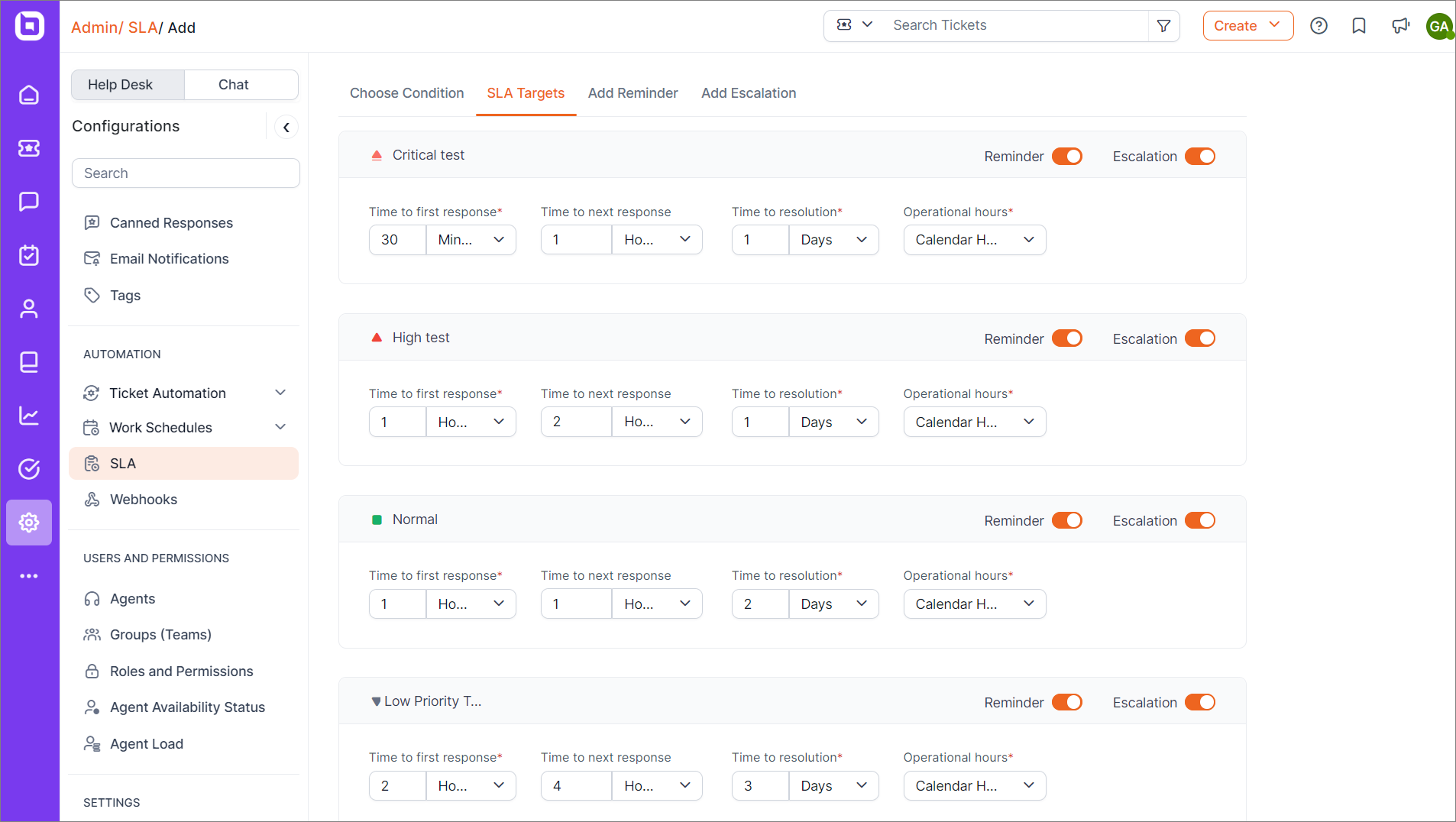
Implementing a defined standard across your company will aid in tracking and measuring agent performance.
So, why is FRT a crucial customer service KPI? It assures customers that their concerns are being prioritized. This metric demonstrates the efficiency of your team in addressing issues.
By monitoring this customer service KPI, you can determine whether your team is adequate or if additional resources are required.
Average handle time (AHT)
Average handle time is defined as the typical duration an agent spends resolving a customer’s issue, from the start of the conversation until the ticket is officially closed.
Responding to your customers promptly is important, but the duration it takes to completely resolve a problem is even more crucial.
Companies strive to enhance this customer service KPI to:
- Elevate customer satisfaction levels.
- Streamline team productivity.
- Minimize support expenses.
A lower average handle time indicates a more proficient customer service team.
An elevated average handle time may indicate:
- A lack of product knowledge.
- Inefficiencies in company workflow procedures.
- Inappropriate investment in ineffective support tools.
AHT can be minimized by reducing the time customers spend waiting, and by enhancing the efficiency of each interaction.
A Netomi report indicates that 39% of consumers are less patient now than they were before the pandemic.
Employing hybrid support models, such as a combination of human and AI as opposed to solely human agents, can significantly reduce handle time.
First contact resolution (FCR)
First contact resolution is used in customer service to measure the ability of customer service representatives to resolve customer issues, complaints, or inquiries during their first interaction or contact.
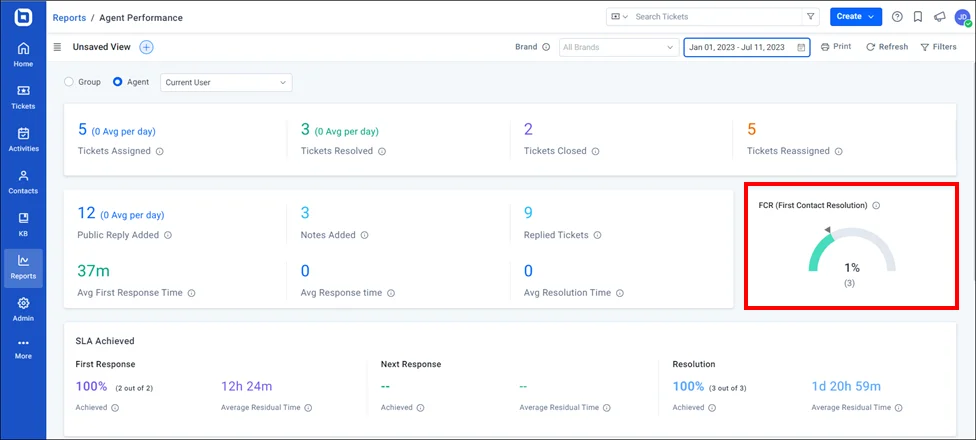
This could be through emails, social media, websites, self-service portals, web forms, or live chats.
Customers derive great satisfaction when their issues are resolved within their first interaction with support. Additionally, effortless resolutions are key to customer loyalty and retention.
A high FCR rate indicates that the customer service team is effective in resolving customer issues promptly and without the need for follow-up interactions.
Better training, improved quality of support, and revising customer service policies can contribute to enhancing first contact resolution rates.
Number of resolved tickets
This customer service KPI indicates the quantity of tickets that a single agent or an entire team has received and resolved within a specific time frame.
If the tickets resolved in a day are significantly fewer than those received, it could indicate a potential delay in resolving customer issues.
Examining this metric can provide insight into the performance of agents during peak times. This can guide important decisions, like arranging training for staff who are not performing well or adjusting staff allocation to manage peak periods effectively.
Customer satisfaction score (CSAT)
Customer satisfaction score is a customer service KPI used to measure the degree of satisfaction that a customer has with a particular product, service, or interaction with a company.
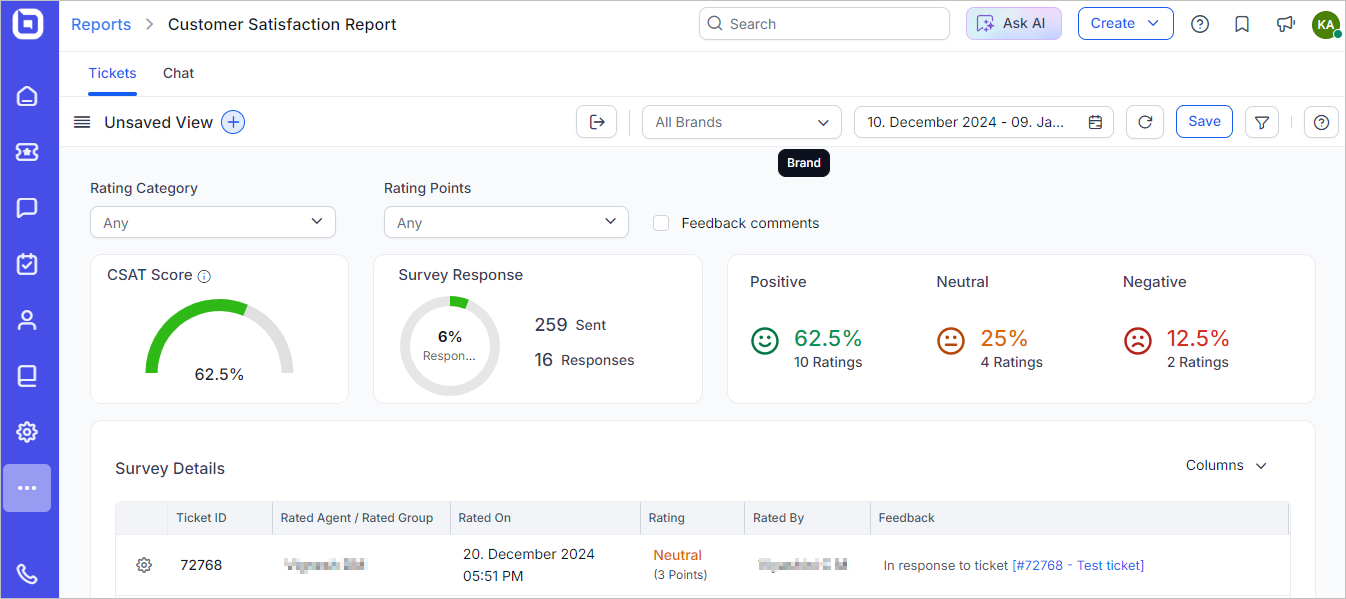
Usually, customers are urged to complete a survey following their interaction with support staff. The customer is asked to rate their satisfaction on a scale, for instance from 1 (very unsatisfied) to 5 (very satisfied).

Customer satisfaction scores reflect customers’ contentment with a service they received. It is a great way to help you complement your strategies for efficient customer service.
Net promoter score (NPS)
Net promoter score is a customer support KPI used to gauge a customer’s likelihood of recommending your business to others. This helps in determining how satisfied customers are and their overall customer experience.
It is calculated by asking customers one question: “On a scale of 0-10, what’s the probability that you would recommend our brand to a friend or a colleague?”
Based on their responses, customers are categorized into three groups: Promoters (9-10 score), Passives (7-8 score), and Detractors (0-6 score).

Customers respond to this question based on their overall experience with your brand. Therefore, it is crucial for the customer service team to maintain other KPIs and provide constant and easy customer service experiences to enhance your NPS.
Customer effort score (CES)
Providing superior customer service involves minimizing difficulties for your customers and ensuring they do not perceive the resolution process as more problematic than the initial issue that prompted them to contact the service team.
Customer effort score is a KPI used to assess how easily a customer can interact with a business or use its products.
It is usually assessed through a survey question after a customer interaction, such as “On a scale of 1-7, how easy was it to interact with our company?”

A lower CES indicates a smoother and more satisfactory interaction with a customer, while a higher score suggests the customer had to put in more effort to have their needs met.
Good customer service is founded on minimizing disruption in a customer’s life and requiring minimal effort from them.
Strategies to enhance your CES may vary from:
- Increasing accessibility across multiple channels.
- Presenting easy-to-use self-service options.
- Offering support in multiple languages.
- Enhancing agent education.
Customer retention rate (CRR)
Customer retention rate is a KPI that measures the percentage of customers a company retains over a certain period.
This rate is calculated by dividing the number of customers at the end of a period by the number of customers at the start of a specified period and then multiplying that by 100 to get a percentage.

Increasing customer retention can significantly increase a business’s revenue by enhancing the lifetime value of its customers.
It is a significant indicator of customer loyalty and satisfaction. A high retention rate often translates into increased profits for a company.
While the quality of a brand substantially influences customer retention rate, customer support is also a key determinant.
It helps nurture customer relationships and ensures customer issues are resolved before they worsen. Offering timely, customized solutions can aid in boosting customer retention.
Customer lifetime value (CLV)
Customer lifetime value is a prediction of the total net profit attributed to the entire journey and relationship with a customer.
It represents the total amount of money a customer is expected to spend on your business, or on your products, during that customer’s lifetime.
This KPI is linked to a business’s revenue objectives, as it provides insights about potential earnings and aids in planning for the business’s sustainability.
It is calculated using the following formular.

This is an important customer service KPI, as it helps a business determine how much money they should invest in acquiring new customers and how much repeat business they can expect from certain consumers.
Customer churn rate
This refers to the percentage of customers that stop using a company’s product or service during a particular period.
It is a critical customer service KPI for businesses that operate on a subscription model, as losing customers can significantly impact the company’s revenue and growth potential.
The essential task of decreasing customer churn is vital for business success. It necessitates regular interaction with customers to understand and resolve any issues they have with a brand.
Churn rate is calculated by dividing the number of customers lost during a specified period by the number of remaining customers.

Average resolution time (ART)
Average resolution time is a KPI used in customer service to measure the average time taken to resolve a customer’s issue or complaint after it has been reported.
It is calculated using the following formular:

It can include time taken for all steps involved in resolving the issue, such as:
- Diagnosing the problem.
- Finding a solution.
- Implementing the solution.
Excellent customer service equates to swift problem resolution. Customers anticipate quick and consistent support experience, and addressing their inquiries in real time is crucial to prevent them from considering other options.
Comprehending the average resolution time can aid in identifying strategies to enhance the efficiency of customer service and detect areas for improvement.
Achieving lower resolution times is an indicator of success, as this ensures that customer queries are addressed promptly.
Cost of conversation
In the realm of customer service, the cost of conversation is a critical factor that can significantly influence the overall efficiency and effectiveness of the support system.
Cost of conversation measures the total operational expenses of your team in relation to the total number of conversations carried out across your communication channels, including your omnichannel inbox.
This cost is not just monetary but also includes the time and resources spent on each interaction between the support agent and the user.
The cost of conversation in customer service can vary greatly depending on:
- The method of communication such as live chat, email, phone call, etc.
- The complexity of the issue being resolved.
- The duration of the conversation.
By taking into account the various factors that influence this cost and implementing strategies to reduce it, organizations can significantly enhance their customer support operations.
It’s important to note that well-trained teams and adjusted staffing schedules based on business needs can help manage support costs.
Best practices to set KPIs for customer service
Customer service KPIs provide a quantifiable measure of how well your team is meeting its objectives.
Setting KPIs for your service teams is a crucial part of managing performance.
By following these best practices, you can ensure that your KPIs are effective tools for driving improvement and achieving your objectives.
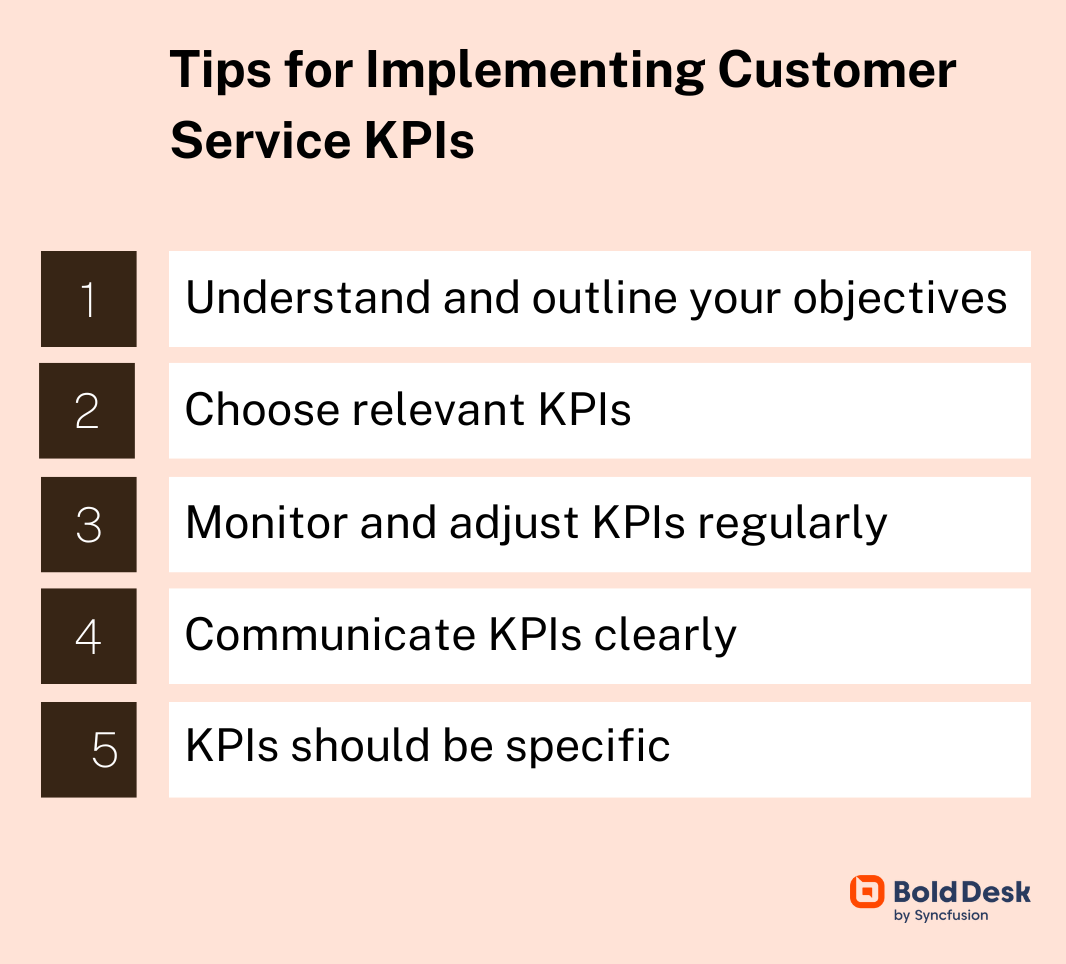
Understand and outline your objectives
Before setting KPIs, it’s crucial to understand your team’s objectives. These objectives could be:
- Reducing the number of tickets.
- Faster resolution.
- Reducing response times.
- Better customer acquisition.
The objectives should align with your organization’s overall goals. Once you have a clear understanding of what you want to achieve, you can set KPIs that will measure your progress toward these goals.
For instance, if your goal is to increase customer satisfaction, then your KPIs should reflect that, such as measuring CSAT score and the number of positive customer reviews or feedback scores.
Choose relevant KPIs
Not all KPIs are created equal. Some may not be relevant to your team’s objectives. Therefore, it’s important to choose KPIs that are directly related to what you want to achieve.
For example, if your goal is to improve response times, a relevant KPI might be the average time your team takes to reply to a query (FRT).
Monitor and adjust KPIs regularly
KPIs are not set in stone. They should be regularly reviewed and adjusted as necessary to reflect changing business goals, customer expectations, and market conditions.
If a KPI is consistently being met with ease, it may be time to set a more challenging target.
Conversely, if a KPI is consistently not being met, it may be time to reassess whether the target is realistic.
Communicate KPIs clearly
Make sure that everyone in your customer service team understands what the KPIs are, why they are important, and how they can contribute to achieving them.
This ensures that everyone is striving toward the same goals.
KPIs should be specific
Your KPIs should be specific and clearly defined. It should be clear what each KPI measures and how it is calculated.
Avoid having too many KPIs, as it can become overwhelming and divert focus from the most important aspects of customer service.
A small number of well-chosen KPIs can provide a clear picture of performance.
KPIs need to be SMART: specific, measurable, achievable, relevant, and time bound. This makes it easier to track progress and achieve results.
Leverage customer service KPIs for better customer support
Understanding the performance of your support team via quantifiable data is essential for enhancing current procedures, making optimal staffing decisions, and ensuring customer satisfaction.
BoldDesk helps you to track and measure key customer service KPIs enabling you to acquire insights and grow your business.
Schedule a live demo to see how BoldDesk can help you implement KPIs for customer service or start a free trial to explore its many features.
If you have any questions about the product and its capabilities, feel free to contact the BoldDesk support team.
We hope this blog post was insightful. Do you have any additional comments or questions? Please let us know in the section below!
Related articles
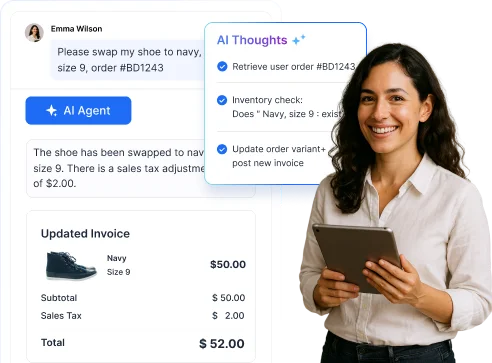


















 Email Ticketing System
Email Ticketing System Shared Inbox Software
Shared Inbox Software Multi Brand Help Desk
Multi Brand Help Desk Internal Help Desk Software
Internal Help Desk Software Trouble Ticketing Software
Trouble Ticketing Software Mobile Help Desk
Mobile Help Desk 









